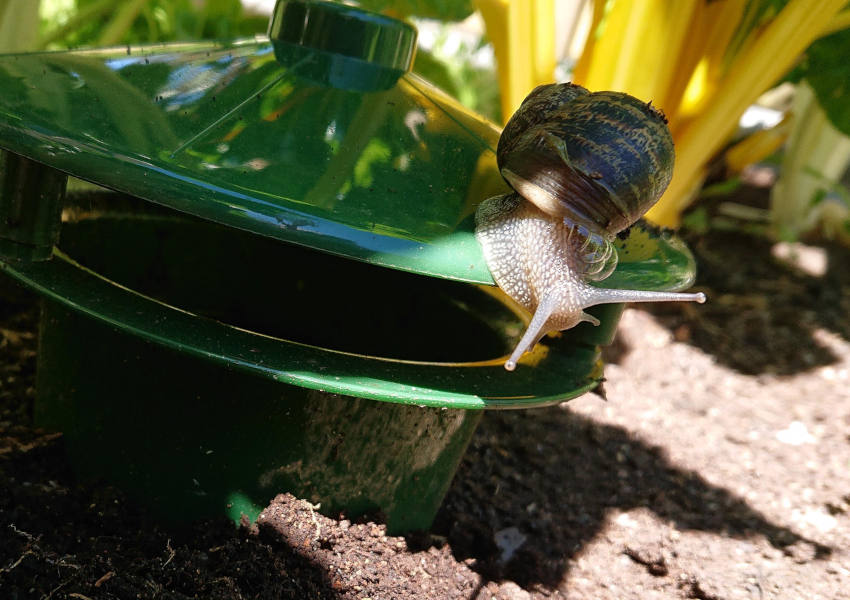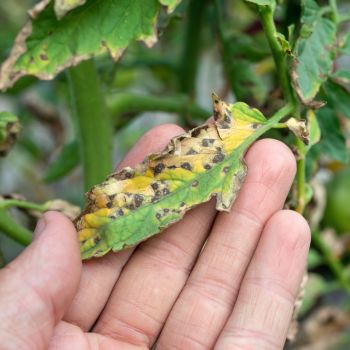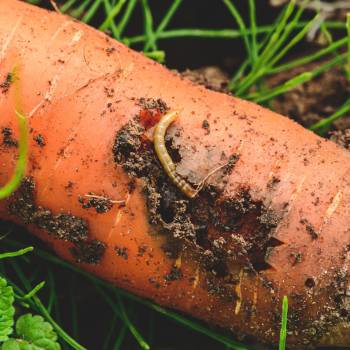Few pests cause quite so much anguish to gardeners as slugs and snails. The damage they can cause to your plants is swift and decisive, often wiping out a whole row of seedlings in a single night.
However, there's plenty you can do to keep the population under control. And you don't need to resort to the dreaded snail pellets which can cause so much harm to benign wildlife.
But first, it's helpful to know exactly what you're up against when it comes to these annoying, slimy creatures.
Knowing Your Enemy
Both slugs and snails are in the gastropod mollusc class of animals. But despite their similar appearances they're not very closely related, and there are countless species of each even within their own groups.
Of course, the most obvious difference between the two is that snails carry a shell while slugs are naked, but in terms of size and colour there's a wide variety both within and between the two families.
Nonetheless, their behaviours and control methods are broadly similar enough that they can be grouped together in terms of being garden pests.
The Damage They Cause
It would probably be easier to list the plants which are immune to slug and snail attention than to mention all the ones at risk. They tend to ignore highly aromatic herbs like lavender, as well as hairy-stemmed flowers like geraniums. They'll avoid euphorbias whenever possible, and tend to overlook ferns while foraging for food.
But other than that, virtually any tender, young plant will be on the menu - and plenty of older ones, too.

Control Methods
There's no sure way to control slugs and snails, and for many gardeners, it becomes almost a sport to find new and ingenious ways of deterring them. However, here are eight of the most common methods which are known to work to some extent at least.
- Remove Hiding Places
Both slugs and snails thrive in dark and gloomy corners, particularly ones filled with damp and rotting organic material. Although you'll never remove all these spots from your garden, keeping the areas surrounding your important beds clean and tidy helps to keep slugs occupied elsewhere.
- Encourage Birds
As with so many pest problems, making your garden attractive to local birds is a great help in dealing with gastropods. If you haven't already, install bird feeders and baths, and keep them filled. With luck, the birds will arrive for the easy main course and take a few slugs and snails as dessert.
- Raise Chooks or Ducks
But if wild avians don't provide enough air cover, consider raising chickens or ducks if you have the space. They rate the slimy molluscs as a delicacy, but be aware that letting poultry roam your garden can be just as destructive as the pest problem you're trying to cure.

- Nocturnal Collection
As you're going about your gardening activities, it's sensible to deal with any slugs and snails as and when you come across them. Either collect them in a bucket and transfer them far away from your patch, or for the less squeamish, a snip with a pair of scissors or a stamp with a heavy boot is quicker and more reliable.
Unfortunately, this will only be scratching the surface. To really do some damage to their numbers, make nighttime patrols by torchlight to surprise them as they feed under the cover of darkness.
In particular, check out beds with plenty of young, fresh seedlings, as well as areas you've recently watered, and you're certain to find rich pickings.

- Set Traps
To make collection easier, there are two types of trap you can lay. The simplest is to leave halves of orange or grapefruit peel dotted around the problem areas, cut side down. Slugs, in particular, will be attracted by the smell and will slime their way inside to feed on the fruity pulp, making them sitting targets.
A second method, now a firm part of gardening lore, is to lay a beer trap. These are hugely tempting to both slugs and snails.
The basic idea is to bury a deep saucer into the soil so that it's level with the surface, and then add a centimetre or two of beer to the bottom. The yeasty smell will draw the creatures in, but after making an accidental splash they'll be unable to escape and meet a boozy demise.
This simple beer trap method works well, but you can make or buy more advanced versions with covers to keep the rain out and the slugs in. But in either case, remember to collect and remove the contents regularly: in warm weather, this task becomes more and more unpleasant the longer you leave it.
More on this method here.

- Barrier Methods
No matter how zealous you are at keeping the population down, there will always be plenty of gastropods left to go around. Using barrier methods to protect individual plants is, therefore, a sensible precaution. Here are three ideas which many gardeners have found useful.
- Copper
A band or ring of copper placed on the soil around the base of vulnerable plants will give any gastropods a mild electric shock if they try and cross over it. This is usually enough to deter them.
For containers, you can buy copper tape to wrap around the rim to achieve the same effect. However, in both cases, if any part of the plant bends down and touches the ground, the copper protection will be useless.
- Grit, Sand, or Egg Shells
For a less electric method, simply sprinkle rough grit, sharp sand, or crumbled egg shells around the plants' bases. This covering will - hopefully - be too uncomfortable to crawl across, although success rates will vary.
- Diatomaceous Earth
A more dependable variant on grit or sand is to use a substance called diatomaceous earth. This is an organic product made from tiny fossilised seashells, and on a microscopic scale, it's incredibly sharp and spiky.
Spreading this around your plants should be a highly effective deterrent to the tender undersides of all slugs and snails, as well as many insect pests such as earwigs.
- Nematodes
Another organic solution is to treat your garden with nematodes. These are microscopic parasitic creatures available in dormant form, which you add to your garden via the watering can. Once established, they'll attack their target pests, often with impressive results.
However, there are two main drawbacks to using them. Firstly, nematodes are highly specific in the pests they attack. You'll need to identify the types of slugs and snails you have in your garden, and potentially buy a separate product for each.
Second, it can be expensive to treat a large area, and as you'll need to treat your entire garden several times a year, the costs can quickly mount up.
- Slug Pellets
As a last resort, spreading slug and snail pellets and baits around your garden can be helpful. However, be sure to use a modern organic pellet based on ferric phosphate, rather than a less selective poison such as metaldehyde which risks harming innocent wildlife.
With each of these methods, some people have great success while others see no positive results at all. But with slugs and snails posing such an ever-present problem, it makes sense to incorporate as many tactics as you can into your gardening routine.





